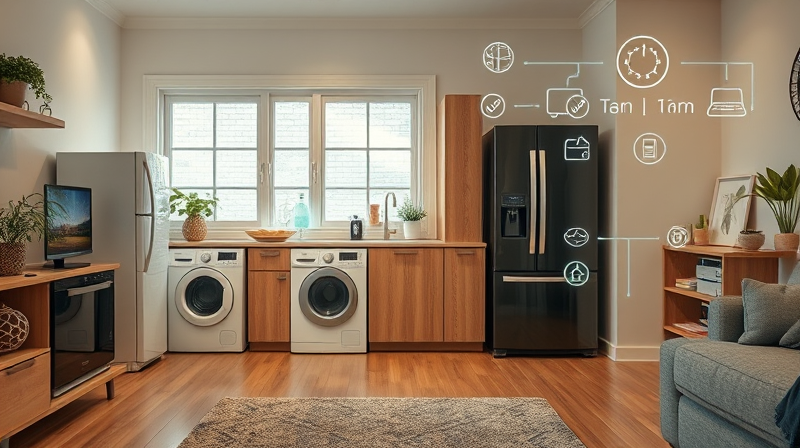In today’s fast-paced, technology-driven environment, performing regular maintenance on your domestic electronics is more important than ever. This article explores comprehensive strategies to keep your everyday devices functioning optimally. Whether you’re dealing with unexpected glitches or planning routine upkeep, these practical approaches can save you both time and money.
Regular maintenance not only extends the lifespan of your appliances but also helps reduce energy consumption and prevent costly breakdowns. With a few conscious habits, you’ll be well-equipped to troubleshoot, repair, and even upgrade your household systems with confidence.
Key Maintenance Tips for Long-Lasting Performance
The key to a healthy home environment is scheduled upkeep. By setting aside a few minutes each month, you can avoid many common issues. Below are some essential practices to ensure your appliances remain in top condition:
- Clean your appliances regularly: Dust and debris can hinder performance, so paying extra attention to hard-to-reach areas like behind and underneath devices is crucial.
- Replace filters: Appliances like air conditioners and dryers rely on functional filters to remove unwanted particles and enhance efficiency.
- Maintain ventilation systems: Whether it’s your home’s central HVAC or individual units, keeping airways clear ensures proper airflow and reduces the risk of overheating.
- Inspect seals and gaskets: Regularly checking seals on refrigerators and ovens helps maintain energy efficiency and prevents leaks.
- Schedule professional maintenance: For more complex systems, professional inspections can uncover issues before they escalate into more serious problems.
These maintenance tips set a strong foundation for a resilient home. However, each appliance may require specific care to address its unique needs.
Tailored Care for Specific Appliances
Every home device has its own set of requirements. By following appliance-specific instructions, you can ensure that each unit performs at its best. Consider the following guidelines for some of the most common household appliances:
- Refrigerators: Dust the condenser coils every three months to boost energy efficiency. Additionally, cleaning the door gaskets with soapy water will help maintain a tight seal, ensuring your refrigerator runs smoothly.
- Washing Machines and Dryers: Always remember to clean the lint trap after every dryer load. For washing machines, leaving the door slightly ajar after use can prevent mold and mildew buildup. The use of proper detergent in the right amounts can make a remarkable difference in performance and longevity.
- Ovens and Stoves: Promptly cleaning any spills avoids grease accumulation, which can affect heating efficiency and overall function. Avoid unnecessary use of self-cleaning features that could strain the appliance over time.
By integrating these practices, you not only enhance the performance of each individual device but also contribute to a well-organized maintenance routine for your entire home.
Smart Troubleshooting Techniques
Even with diligent care, electronic devices may encounter occasional malfunctions. Quickly diagnosing issues can save both repair costs and time. Before you panic and reach for your phone to call a technician, try some simple troubleshooting steps:
- Ensure power connections are secure and that the device is properly plugged in.
- Consult the user manual for tailored troubleshooting instructions.
- Look for any error codes and research what they might signify online.
- Try performing a hard reset by unplugging the device for a few minutes to clear any minor glitches.
These techniques empower you to take control of minor appliance issues, potentially preventing small malfunctions from developing into larger, more expensive problems.
Deciding Between Repair and Replacement
At some point, you might face a challenging decision: should you repair the appliance or invest in a replacement? It can be a daunting choice, but considering a few key factors will guide you:
- Age of the device: Older devices may be more prone to frequent breakdowns, which might make replacement a more cost-effective option.
- Repair costs: Compare the cost of repair to the price of a new model. Sometimes, newer appliances with advanced features can also offer improved energy efficiency.
- Frequency of issues: Frequent malfunctions can be stressful and financially draining. In such cases, it might be time to invest in new technology that promises better performance and reliability.
- Environmental impact: Upgrading to energy-efficient devices reduces your carbon footprint and supports a more sustainable lifestyle.
By assessing these aspects, you can make an informed decision that balances cost, convenience, and sustainability.
Leveraging Advanced Technology for Maintenance
The modern technological landscape offers exciting opportunities to enhance appliance maintenance. Innovative systems and tools are now available to help you monitor and maintain your devices:
- Smart home systems: These platforms can track energy usage and device performance in real time, alerting you to potential issues before they escalate.
- IoT-enabled appliances: Many modern devices come with self-diagnosis features that easily pinpoint malfunctions, simplifying repairs.
- Augmented reality tools: AR-guided repair assistance means that even complex repairs can be tackled with confidence and ease by providing step-by-step visual instructions.
These technologies not only improve maintenance efficiency but also offer a glimpse into how the future will shape domestic care practices.
Eco-Friendly Practices for a Sustainable Home
Environmental stewardship should be an integral part of your maintenance plan. By implementing eco-friendly practices, you support not just your household but the wider community and the planet:
- Choose energy-efficient appliances: When it’s time to replace an old appliance, opt for models that consume less power and reduce energy costs over time.
- Recycle responsibly: Properly dispose of or recycle outdated electronics to minimize waste and support sustainability initiatives.
- Support right-to-repair: Encouraging policies that guarantee repair over replacement helps reduce overall electronic waste and supports consumers’ rights.
Adopting these green practices not only benefits the environment but also serves as an inspiring reminder that every small effort contributes to long-term sustainability and a greener future.
In conclusion, maintaining your domestic electronics with both routine and specialized care can ensure reliable performance and longevity. From regular cleaning and troubleshooting to leveraging technology and embracing eco-friendly practices, you have a comprehensive toolkit at your disposal. Embrace these strategies to create a safer, more efficient, and inspiring home environment that stands the test of time.








